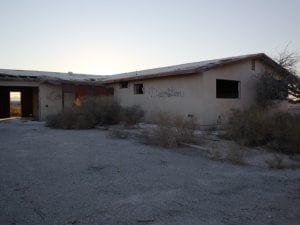photo basel is Switzerland’s first and only international art fair dedicated to photography-based art, bringing together galleries from around the world in a unique, authentic setting. Sven Eisenhut, Founding Director, discusses the power and craft of images in the contemporary climate, as well as the developing vision for younger generations.
A: This year you have separated the fair into main, tape/basel and not-for-profit. What do you think is the relevance of these different sections, and how has this changed the types of work on display?
SE: We are a boutique art fair. We try to bring the best of what is happening today in the photography world to our collectors and guests. We also think that it is a great advantage to be able to showcase developments in the world of the lens-based medium. With tape/basel we want to showcase a small selection of time based media.
We try to get the broadest selection of what happens today in the photography world, and this of course includes moving images. The not-for-profit section is very important for us. We showcase nominees from the VFG Nachwuchsförderpreis (Young Artist’s Prize for Photography), a highly respected annual award that is produced by VFG (association of creative photographers), Switzerland. The program is designed to showcase new talents within Switzerland. We’re also working with the School of Arts and Design of Basel (HGK/FHNW) to platform a series of works for an emerging artist called Anastasia Chaguidouline. It is very important for us to feature art schools and young artists, as they give an extraordinary peek into what the young generation is up to today and what will eventually transform into the “real art world.”
When you speak of photography nowadays, the moving image is an inherent part of most of the new generation’s art practice. It is easier for visitors to get an overview; we are a boutique fair, people instantly know what attracts and what appeals to them. Moving image is another lens-based art form and we have been approached by other galleries over the course of the last year, so we’re figured there was a strong need.
A: How do you think that the introduction of moving image and artists’ films is integral to the changing mode of photography and film?
SE: It is a lens-based medium that we see as an extended version of photography. And this year we’re introducing it with nine artists. The most prominent one amongst them might be the piece The Earth Who Fell to Man by Mika Taanila who recently represented the Nordic Pavilion at the Venice Biennale 2017. The famous quote by Jean-Luc Godard, “the cinema is truth 24 times per second,” is still pertinent today.
A: How does the not-for-profit section aim to promote the work of emerging artists from Switzerland – what does this bring in terms of new ideas and innovative practices?
SE: Since the very beginning we have fostered a really close dialogue with art schools so that the young generation can gain some valuable experience.
A: What are some of the main themes that have emerged in this year’s works? Are there any geopolitical or social topics that have come to the foreground?
SE: What we have discovered this year are many emerging young talents such as Tania Franco Klein, Julia Baier, Sebastian Riemer, Patrick Willocq or Reine Paradis. We do see political works by Fabio Bucchiarelli and Halim Al-Karim. More and more artists emphasize the uniqueness of the medium such as Stacey Steers, Deborah Oropallo, Paolo Ventura, Iris Hutegger, Aflred Drago Rens, just to name a few. And naturally we have some powerful works from household names such as Roger Ballen from Galerija Fotografija, Slovenia and Nan Goldin and Wynn Bullock from Fabian & Claude Walter Galerie, Switzerland.
A: What can we expect from new galleries, such as Catharine Clark, Springer and Mariane Ibrahim?
SE: I would say we can expect extremely strong work by both younger and more established artists who work with more political subject matters. Mariane Ibrahim Gallery will be presenting the fabulous work of Fabrice Monteiro and Galerie Springer from Berlin will show an amazing selection of new works by Edward Burtynsky and Catharine Clark is bringing works by Stacey Steers to both tape / basel and photo basel itself.
A: How does the fair create dialogues internationally, and to the wider art community?
SE: We are constantly travelling to festivals and fairs. We like to be out there, scouting artists ourselves which will then lead us to the galleries. That is how we managed to get a contingency of 16 countries and five continents, ranging from Hong Kong to Peru. We are linked to art fairs around the world because that is where we find inspiration, meet new people and encounter new works.
A: Why do you think that fairs of this kind are so important within the industry, and what do you have planned for future years?
SE: We are dedicated to one medium, and are showcasing a highly sophisticated selection of galleries combining museum artists and emerging talents. For us, size matters in both respects: the smaller we remain, the more dedicated we can be. We have many plans in the pipeline which are extremely exciting and I’ll be able to share with you soon hopefully.
photo basel runs 14-18 June at Volkshaus Basel. For more information: www.photo-basel.com.
Reine Paradis’s Jungle features in the June / July issue of Aesthetica. For more information or to pick up a copy: www.aestheticamagazine.com/shop
Credits:
1. Reine Paradis, Empty Pool. (Shot in Los Angeles, California, 2015). photo basel 2017, Volkshaus Basel, 14 – 18 June 2017, www.photo-basel.com





